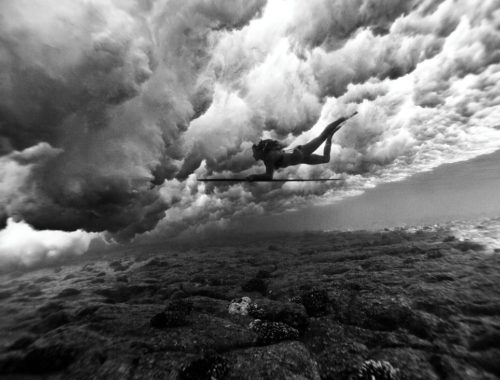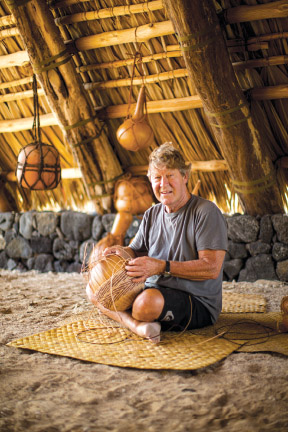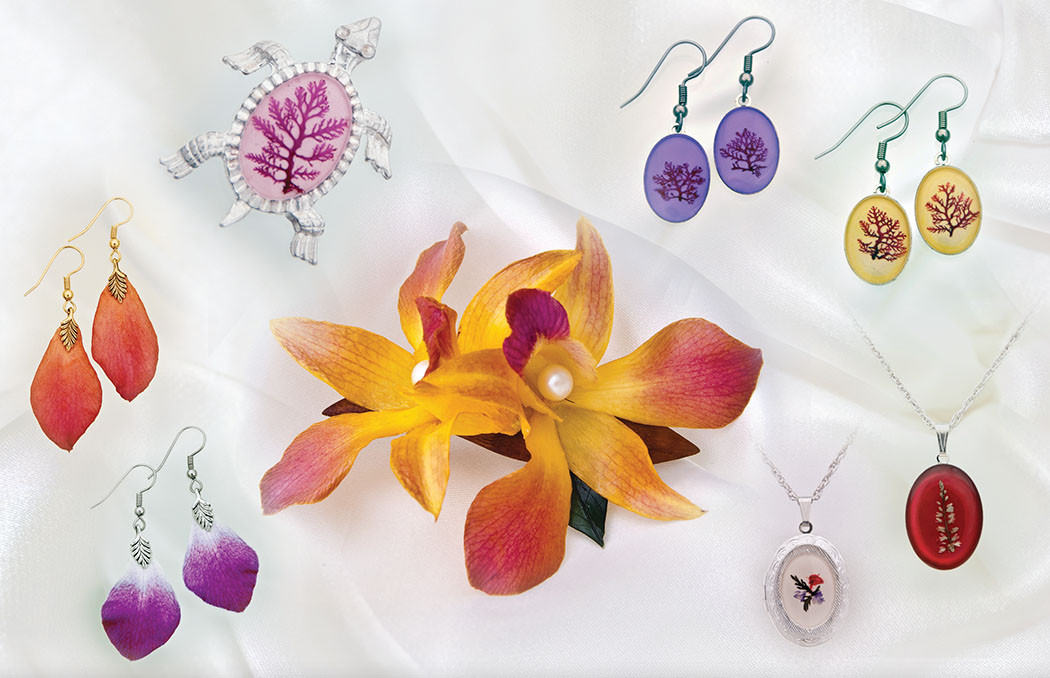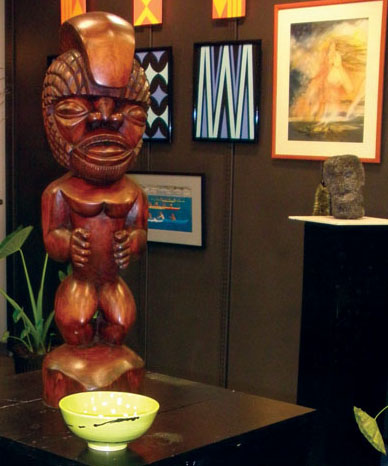
Terri’s Vision: Showcasing Native Hawaiian Art
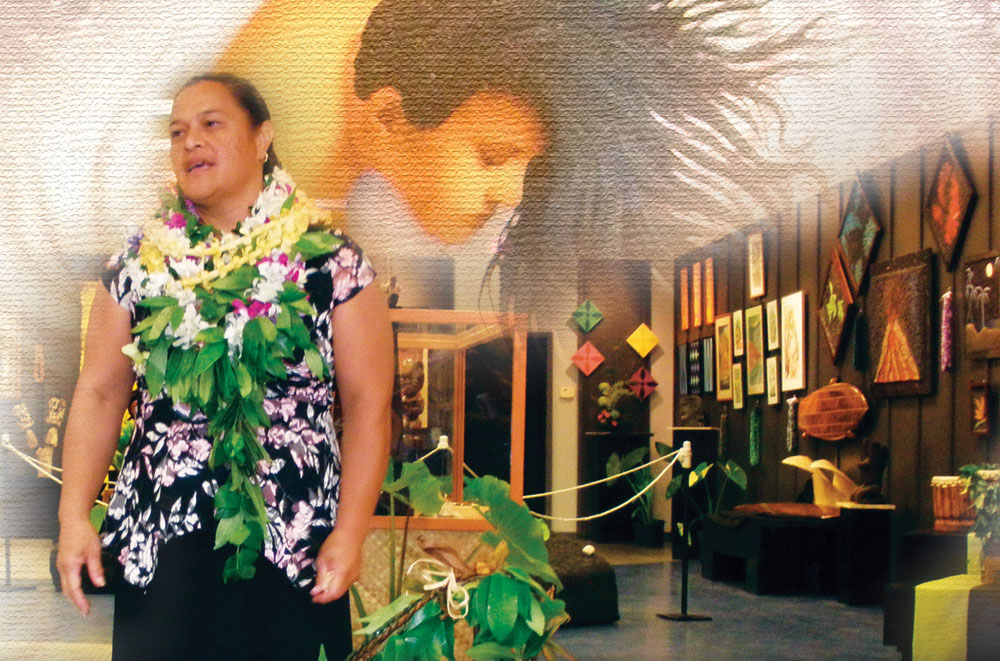
By Prana Mandoe
“I want our people to know we can succeed,” says Terri Napeahi, proprietor of Papa Mū Gallery and President of Perpetuating Indigenous Hawaiian Arts, or PIHA, a nonprofit venue for Native Hawaiians to develop and show their work.
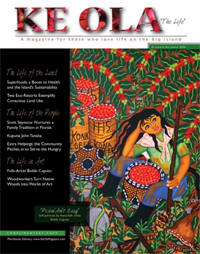
“In my mind, this is a tool to encourage confidence,” says Napeahi, beaming a smile as warm as her golden eyelash lei as she sits at the door to the Native Hawaiian Art Exhibit, next to the 2010 Merrie Monarch Hula Festival. She is surrounded by prints of ‘opihi, photographs of families, and carvings of shark gods. This is Napeahi and PIHA’s second annual gallery show.
“I didn’t do this for me,” continues Napeahi. “The whole purpose is to give our people some funding to take care of their families.”
In a kukui nut shell, Terri’s vision is this: PIHA’s nonprofit program in arts and business, including the exhibit, will continue to encourage Native Hawaiian work. The goal of Papa Mū Gallery, which opened at Prince Kuhio Plaza last September, is to promote that art globally, in markets of the highest prestige. A website, travel to indigenous arts festivals, and ultimately a funding source for the needs of the Hawaiian comMūnity will follow.
Napeahi was born Terri Lei Napeahi, daughter of Robert Napeahi Jr. and Roselani Aina. She was raised in Keaukaha, surrounded by people who give. “We give, and we don’t ask for anything in return,” she explains. “Sure, I can sing at your wedding. Sure, I can sing at your funeral. I don’t ask for money. I do it because I want to.” All her life, Napeahi wanted to serve her people. As her cousin Walter Manuia, artist and head of volunteer security at the Native Hawaiian Art Exhibit, says, “I’ve been listening to her vision for 40 years.” Creating PIHA, putting on an annual exhibit, and opening Papa Mū Gallery are Terri’s vision manifested. They are her personal way of bringing her people along the path of success.

The name Papa Mū itself refers to successful decision-making. Papa Mū are flat stones used for konane, an ancient Hawaiian game like checkers. Historically, ali’i and high priests used them both as games and as a tool to plan battle strategies. The playing board is a geometric arrangement of holes etched into pahoehoe lava. Players jump black and white pebbles across the board; they strive to be the last one with a free move. At one time, Napeahi was working with an archaeological crew, hiking in the pahoehoe and ‘a‘a lava of Ka‘u. It struck her that the papa Mū were placed in very significant places—places where success was made. She named her dream gallery Papa Mū for this inspiration.
Now, how to get there?
Napeahi majored in business marketing at the University of Hawai‘i at Hilo. Then, she commissioned herself. For a year and a half, she created art. Next, she worked for a graphic designer who taught her how to photograph her work, print it, frame it, and build her portfolio. She printed gift cards and sold them to people she knew. They went fast. She researched the art market in East and West Hawai‘i, finding that most gallery owners and framers didn’t even know Hawaiian artists exist. One shop owner told her that in 15 years, she hadn’t framed work for a single Native Hawaiian.
Well, Napeahi is on a mission to change that; in fact, she is working to establish a Hawaiian fine arts presence that will help the world!
Napeahi could have built a personal business once she had the tools and confidence to market her own work. But that’s not her style. Instead, she invited Joseph Kalima out to breakfast. Kalima is a talented painter and canoe paddler with a degree in art from UH Hilo. He is now Vice President of PIHA; at the time, he had no idea why Napeahi asked him to Kuhio Grille. Over breakfast, she simply spread out her business cards, gift cards, brochures, and portfolio.
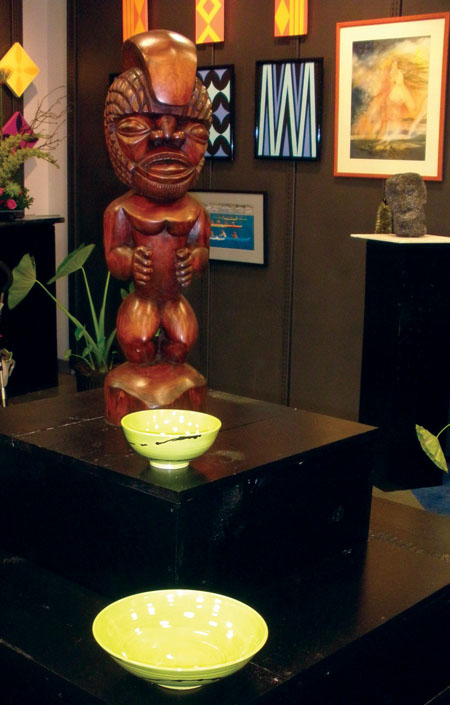
“He was stunned,” remembers Napeahi. “He asked, ‘Terri, you did all this?’”
“Yes,” she answered, “And you can too.”
Napeahi used the meeting with Kalima to share her vision of a hui (group) of Native Hawaiian artists working together to develop and promote themselves. She wanted more talented Hawaiians to bring out their work. She and Kalima approached photographer Lehua Waipa Ah Nee and her mother, designer and comMūnity leader Mapuana Waipa. Together, the four conceived and birthed PIHA. They began planning the 2009 Native Hawaiian Art Exhibit. They found artists in the homesteads, in the backlands, people whose talents were known only to their families.
Walter Manuia, the cousin who’d heard Napeahi’s dream since small-kid time, described the growth of the exhibit from one year to the next. “The first year, Ronald Kanakanui [a wood sculptor] said that he’d never seen more than 30 Hawaiian artists together at one time. Terri said, ‘We have 60.’ And that year, we did,” said Manuia. “This year, more than double that.”
The artists worked together to hang the exhibits. They brought potluck; they brought children; they stayed late at night, even slept over to print tags and organize the silent auction. The work that it takes to put on a gallery-style exhibit without a gallery budget is phenomenal. However, in true Hawaiian style, they give credit to a deeper source. “What really makes it special,” said Manuia, “[is] the kupuna here with us.” (Kupuna are elders, living and passed.)
The 2010 exhibit featured an ‘ie‘ie helmet made 200 years ago, a collection of poi pounders, and a hall table and nightstand completely woven over with lauhala – all work of kupuna. It showcased modern kapa printed by schoolchildren, enormous fishhooks hanging from the ceiling, and glass boxes displaying lobster molts in tableaux with rocks and shells–all contemporary expression. There were paintings, weapons and ‘ulu maika–an ancient Hawaiian game using lava rocks as rolling stones. Gourds, sculpture, fashion. A magazine. Interviews.
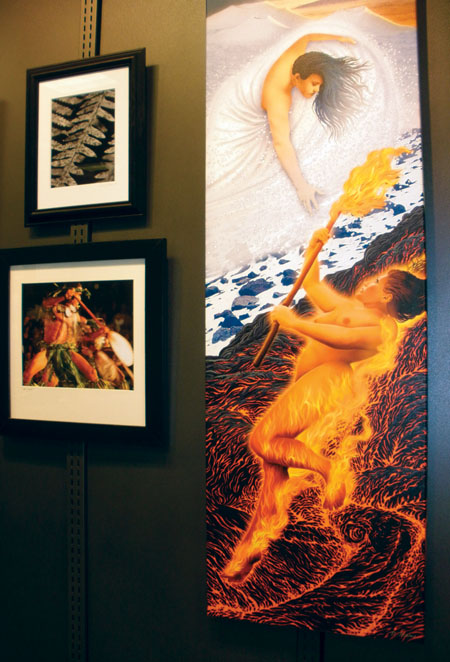
“We did it together,” Napeahi told everyone celebrating at the artists-only opening. “We laughed together, we cried together. My dream wouldn’t be real without you trusting me with your art.”
Napeahi’s dream is currently speeding into the next dimension: business for profit. Now that PIHA and the Native Hawaiian Art Exhibit have brought the radiance and diversity of Native Hawaiian art to the comMūnity, and now that Hawaiians have felt the chickenskin joy of seeing their work displayed in honor, Papa Mū Gallery is ready to promote that talent. “My job is to market the work,” says Napeahi. “The idea is to financially sustain ourselves with our own money…for the needs of people.”
And that, e na hoa ‘aina (friends of the land), is Terri’s vision.
For more information on the Native Hawaiian Art Exhibit in 2011 or on Papa Mū Galleries, contact Terri at 959-1101, tnapeahi@yahoo.com, or at papaMūgallery.com. We can all know and support Native Hawaiian art! ❖
Contact Prana Mandoe at prana@hawaiiantel.net.
